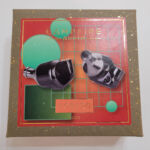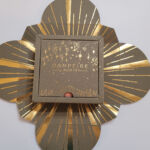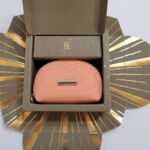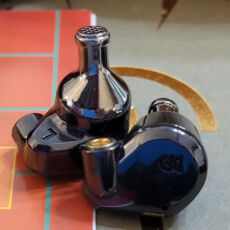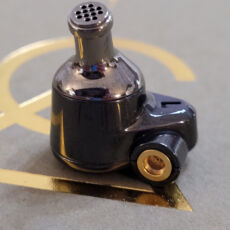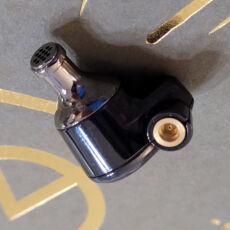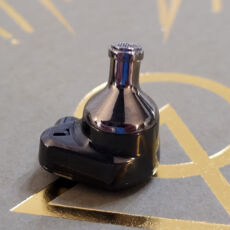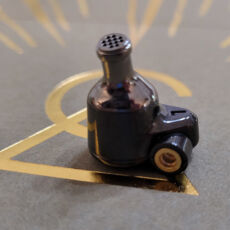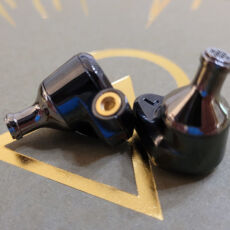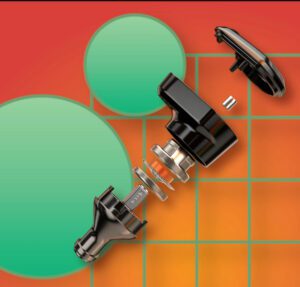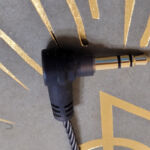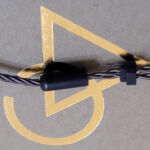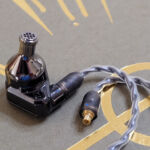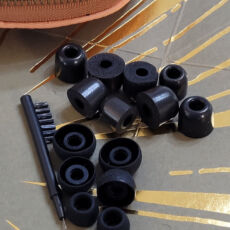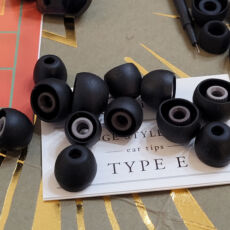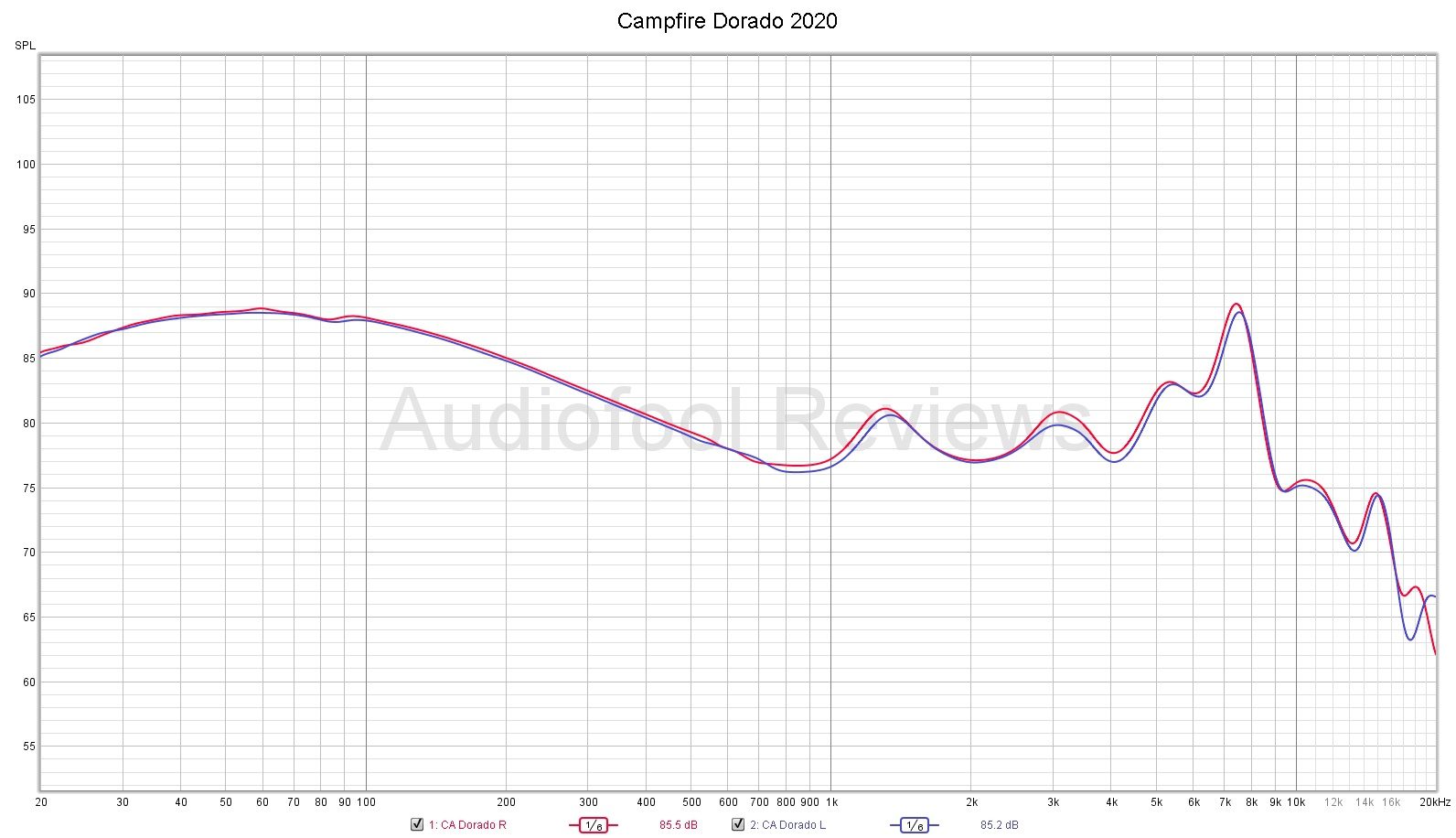Campfire Dorado 2020
disclaimer: The Campfirea 2020 was sent to me by The Contraptionist for review. If you haven’t checked out the Contraptionist’s blog, be sure to check it out. He’s got a ton of good content and a lot of models that complement what can be found here. Well worth a look. I have no financial interest in Campfire Audio, nor have I received any advice or incentive for this review. I returned the product at completion so had the Vega 2020 for a span of roughly 3 weeks.
Unboxing / Packaging:
Campfire’s packaging on these is quite unique as it has an outer wrap over the box with the label on front showing the brand information and the earpieces and a foil seal on the reverse holding the wrap in place. When removed the petals unfold to reveal a starburst pattern with the box at center. The box itself uses Campfire’s star field pattern as we’ve seen in most of their packaging for quite some time now. The soft case takes up most of the space and the earpieces themselves are shipped in a two pocket bag inside the case to prevent scratches in transit. The Kit includes earpieces, cable, a soft zipper case, two of the two-pocket bags for earpieces and tips, a large assortment of 3 styles of tips (Silicons, Foams, and Final Audio E series), and a cleaning tool. The requisite warranty card is also in the bottom of the package. Overall, its a well thought out kit with plenty of protective packaging and tip options.
Build/Fit:
The Dorado 2020 stays with the same basic shape as the original model although dimensions have minor variations. The shell is made of what Campfire calls black ceramic material that to my eye is more a dark gray with a high gloss finish. The inner shell and nozzle are made of brass and PVD coated which gives them a high gloss almost blued steel look to them. While not an exact match to the inner shell color, they blend nicely and with most of the inner shell hidden when in use are not likely to draw attention. Shells are a three part arrangement with a thin face plate, a thick inner shell that includes the mmcx connector, and a thin inner shell with nozzle. Nozzles exit the center of the barrel with a fairly steep forward rake for deeper insertion. There is a single vent on the outer shell at the junction of the round portion and mmcx housing. The rounded shape of the Dorado does allow it to roll some in ear and the ear-hooked cable while helping to hold it in place may need some adjustment for the hooks to be tight enough to prevent movement during activity. I found the Dorado comfortable for extended use with medium sized tips and experienced no physical fatigue during wear.
Internals:
The Dorado uses Campfire’s 10mm dynamic driver with an amorphous diamond like carbon diaphragm for added rigidity and a neodymium magnet structure for added speed. A single custom tuned balanced armature is added to handle the treble duties as well. The Dorado shares a shell and a dynamic driver with its sibling the Vega, meaning one can compare the FR charts to see the impact of the balanced armature and the brass vs stainless nozzle structures of the two models. One notable difference is in the specs. Nominal impedance of the Dorado 2020 is 10Ω with a sensitivity of 94 db/mW at 1kHz while the Vega lists a higher impedance with the same sensitivity. I found the Dorado somewhat source sensitive, whether that is due to the low impedance or to some other factor is debatable, but the end result is that some care needs to be taken in pairing the Dorado for best results. I also found that even with a low impedance in medium sensitivity the Dorado prefered a fairly high powered source to really do its best work. I found the A&K Alpha and IfI-iDSD BL to both be good options for portable gear and the Burson Fun/Swing or Xduoo Xa-10 to be solid choices for desktop use.
Cable:
The cable shipped with the Dorado is Campfire’s standard litz cable that I have reviewed on more than one occasion previously. It starts with a 90º 3.5mm jack with good strain relief before exiting as a 4 wire twist up to the splitter. The splitter is black aluminum with a matching chin slider (although it appears to be plastic). From the splitter up the two wire twists are a looser twist than the 4 wire below and terminate with ear-hooks and beryllium copper mmcx connectors marked R/L for reference. There is no red dot so one has to find the labels which are somewhat hidden. The cable is well made, and durable, but I prefer the heavier super Litz that ships with the Solaris 2020. At first glance the two cables look very much alike but the super litz is heavier with twice the strand count of the standard and a bit better durability.
Tips:
One thing I can’t accuse Campfire of is skimping on tip options. The kit comes with as complete a set of tips as I’ve seen of late including foams, final Audio E-series, and Campfire’s own silicone tips in multiple sizes. There are five size of Final Audio tips, 3 sizes of 2 styles of Campfire silicons, and 2 sets of foams. I found the large Campfire tip or the medium large Final worked best for me and did most of my listening with the mid size Final audio as it was most comfortable.
Sound:
Bass:
The bottom end on the Dorado 2020 is big, bold, and full with an emphasis that plateaus around 60Hz and then slowly drops back as it moves into the lower-mids. Bass extension is very good with lots of rumble when called upon and no perceptible roll-off until well into the 20s. Mid-bass is also above rest of the signature but slightly less emphasized than the sub-bass and a little better textured. Driver speed is good but decay is a bit slower than attack giving the lows a really full sound. Overall, bass is the star here and the Dorado 2020 improves on the original with more sub-bass and a slightly tighter mid-bass to go with it.
Mids:
While the Dorado 2020 is a classic V tuning, it doesn’t particularly sound like one. One look at the FR will tell you the mids should sound recessed but they don’t. The lower mids have good weight and detail and gives male vocals a nice heft. The mids stay pretty much on the same footing with the lower mids and give guitar a nice guttural growl, strings a near natural tonality, and female vocals cut through the mix but do not stand in front of their male counterparts. I really like the tuning of the mids here as nothing is way out behind or way out in front of anything else. If trying to show off the mids on the Dorado 2020, try using pieces that emphasize piano or acoustic guitar as both will highlight the tonality of the Dorado.
Treble:
Lower treble stays on the same plane with the mids and has good detail without getting fatiguing in the process. There is a push forward in the true treble range with a peak at about 7kHz that gives some added air but may be fatiguing to some as it does give the treble a sharpness to some female vocals. There is not a tendency toward sibilance but it does not smooth it over either. Snare rattle has good crispness and edge and cymbals have good energy as well without getting too hot in the process. There is good air and some sparkle at the top end, but the 2020 drops back to mid levels immediately above the 7kHz spike and then rolls-off somewhere above 14kHz. Overall, the treble is smoother, more detailed, and more polite than the original.
Soundstage / Imaging:
Stage is wider than deep which sounds like the typical indictment of most iems, but here it is not so much so as the Dorado 2020 has good depth to go with it and a lot of height as well. It won’t rival over-ears, but for a closed iem, it has a great stage in all dimensions. Seating the orchestra is straight forward with no big gaps, overlaps, or miss-placements. Instrument separation is good although there is some compression on busy tracks that can impact this. Layering is good as well but not class-leading like the Andromeda. Imaging is good with movements easily tracked and placed on the stage but there is a little bit of loss of focus around the center front where positions are not as tightly defined.
Thoughts / Conclusion:
Let’s get this out of the way up front, no the Dorado 2020 is not a neutral reference tuning, it’s not even close. Its a V tuning with emphasis at both ends of the signature and if it were the stereotypical V I’d dislike it. The thing is, I do like it, not for critical listening but for fun, casual use where it is a very engaging listen and easy to get lost in the music. I still love the Andromeda and this wont take its place in my recommendations, but for just plain fun, it surpasses even the mighty Andro. The Dorado 2020 shares a lot of DNA with the Atlas and Vega but to my ear surpasses both of those efforts as the mids are markedly better than the Atlas and feel less sucked out and the upper range helps balance the bass better than the Vega which can overwhelm the rest of the signature at times. The Dorado 2020 may well be the most engaging model in the Campfire lineup and that is saying something.
-
Bass - 8/108/10
-
Mids - 7.5/107.5/10
-
Treble - 7/107/10
-
Soundstage - 8/108/10
-
Imaging - 7/107/10
Summary
Pros: Great build quality, good tonality, very engaging
Cons: V-tuning w/Big bass and treble tuning may be harsh for some


